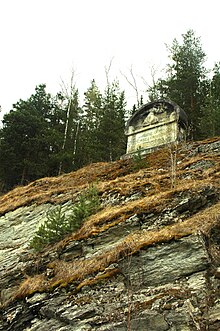
Dovre is a municipality in Innlandet county, Norway. It is located in the traditional district of Gudbrandsdal. The administrative centre of the municipality is the village of Dovre. Other villages in Dovre include Dombås and Hjerkinn. The municipality is bordered on the north by Oppdal municipality, on the east by Folldal, on the south by Sel and Vågå, and on the northwest by Lesja. The highest peak in the municipality is Snøhetta at a height of 2,286 metres (7,500 ft).
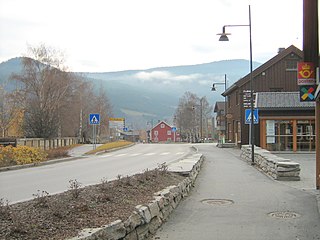
Vågå is a municipality in Innlandet county, Norway. It is located in the traditional district of Gudbrandsdal. The administrative centre of the municipality is the village of Vågåmo. Other village areas in Vågå include Lalm and Bessheim.
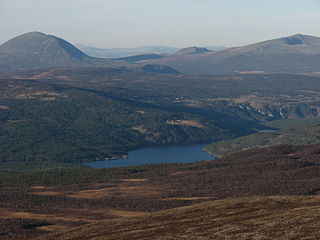
Nord-Fron is a municipality in Innlandet county, Norway. It is located in the traditional district of Gudbrandsdal. The administrative centre of the municipality is the town of Vinstra. Other population centers in Nord-Fron include the villages of Kvam and Skåbu.

Sel is a municipality in Innlandet county, Norway. It is located in the traditional district of Gudbrandsdal. The administrative centre of the municipality is the town of Otta. The municipality also includes several notable villages including Bjølstad, Dale, Høvringen, Nord-Sel, Sandbumoen, Sjoa, and Skogbygda.

Gudbrandsdalen is a valley and traditional district in the Norwegian county of Innlandet. The valley is oriented in a north-westerly direction from Lillehammer and the lake of Mjøsa, extending 230 kilometers (140 mi) toward the Romsdalen valley. The river Gudbrandsdalslågen (Lågen) flows through the valley, starting from the lake Lesjaskogsvatnet and ending at the lake Mjøsa. The Otta river which flows through Otta valley is a major tributary to the main river Lågen. The valleys of the tributary rivers such as Otta and Gausa (Gausdal) are usually regarded as part of Gudbrandsdalen. The total area of the valley is calculated from the areas of the related municipalities. Gudbrandsdalen is the main valley in a web of smaller valleys. On the western side there are long adjacent valleys: Ottadalen stretches 100 kilometers (62 mi) from Otta village, Gausdal some 50 kilometers (31 mi) from Lillehammer and Heidal some 40 kilometers (25 mi) from Sjoa. Gudbrandsdalen runs between the major mountain ranges of Norway including Jotunheimen and Dovrefjell–Rondane.

is a town in Sel Municipality in Innlandet county, Norway. The town is also the administrative centre of the municipality. The town is located at the confluence of the Gudbrandsdalslågen and Otta rivers. The European route E6 highway runs through the town. The Dovrebanen railway line also passes through the town, stopping at the Otta Station. The 2.13-square-kilometre (530-acre) town has a population (2021) of 2,283 and a population density of 1,073 inhabitants per square kilometre (2,780/sq mi).

The Gudbrandsdalslågen is a river which flows through the Gudbrandsdal valley in Innlandet county, Norway. The 204-kilometre (127 mi) long river runs through a large valley in Eastern Norway before emptying into Mjøsa, the largest lake in Norway. The river flows through the municipalities of Lesja, Dovre, Sel, Nord-Fron, Sør-Fron, Ringebu, Øyer, and Lillehammer.

is a village or small town in Dovre Municipality in northern Innlandet county, Norway. The village serves as the commercial centre for the upper Gudbrandsdalen valley. It lies at an important junction of roads with the European route E6 highway heading north and south connecting the cities of Oslo and Trondheim and the European route E136 highway heading west to Åndalsnes. The Dovrebanen and Raumabanen railway lines meet in the village at Dombås Station as well. Dombås Church is located in the village.

Prillar-Guri or Prillarguri is a semi legendary figure who according to oral tradition was a woman from Sel, Norway who played a key role in the Battle of Kringen in August 1612.

The Kalmar War (1611–1613) was a war between Denmark–Norway and Sweden. Though Denmark-Norway soon gained the upper hand, it was unable to defeat Sweden entirely. The Kalmar War was the last time Denmark-Norway successfully defended its dominium maris baltici against Sweden, and it also marked the increasing influence of the two countries on Baltic politics.
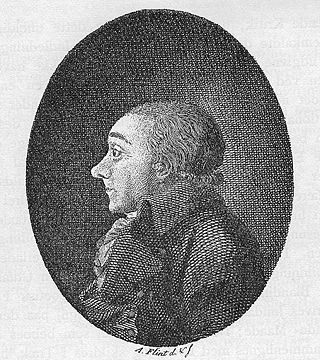
Edvard Storm was a Norwegian poet, songwriter and educator. His writings were frequently characterized by the Norwegian romantic nationalism common to the age.

Clan Sinclair is a Highland Scottish clan which holds the lands of Caithness, the Orkney Islands, and the Lothians. The chiefs of the clan were the Barons of Roslin and later the Earls of Orkney and Earls of Caithness.

The Battle of Dombås was fought between Norwegian Army infantry forces and German Fallschirmjäger paratroops in mid-April 1940. As part of their conquest of Norway south of Trondheim, and as a countermeasure against reported Allied landings in the Romsdal area of south-western Norway, the Germans dropped a company of paratroopers near the vital railroad junction of Dombås on 14 April 1940. For the next five days, the German force blocked the Dovre Line railroad line between Oslo and Trondheim, as well as the main road between the two cities.
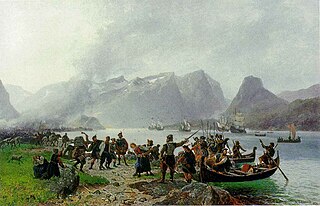
George Sinclair was a Scottish mercenary who fought and died in the Kalmar War. He is remembered in popular song in Norway and the Faroe Islands, through the ballad Sinklars Visa.
Events in the year 1612 in Norway.
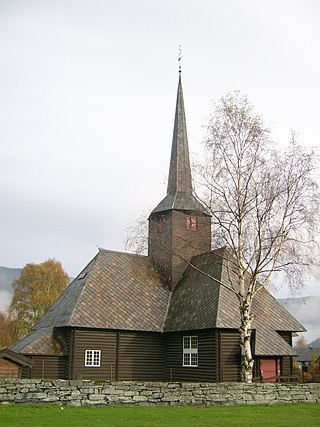
Kvam Church is a parish church of the Church of Norway in Nord-Fron Municipality in Innlandet county, Norway. It is located in the village of Kvam. It is the church for the Kvam parish which is part of the Nord-Gudbrandsdal prosti (deanery) in the Diocese of Hamar. The brown, wooden church was built in a cruciform design in 1952 using plans drawn up by the architect Magnus Poulsson. The church seats about 450 people. The church has a cemetery with a memorial to British soldiers that were killed in an engagement at the site in 1940.
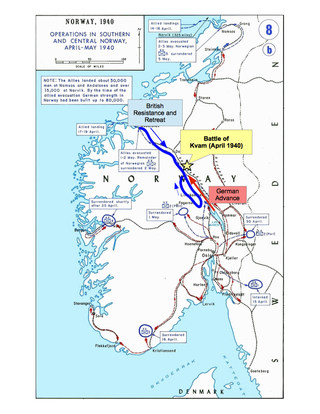
The Battle for Kvam took place 25 and 26 April 1940, in the Gudbrandsdal Valley in the village of Kvam, Oppland, Norway, between British, Norwegian, and German troops. The Germans were moving rapidly north up the river valley to conquer central Norway. In the battle, soldiers from 1st Battalion, York and Lancaster Regiment and the 1st Battalion, King's Own Yorkshire Light Infantry (KOYLI), together with their Norwegian counterparts, held a rapidly advancing German army at bay for two days. It was one of the hardest fought battles of the Norwegian Campaign.
John Sinclair, Master of Caithness was a Scottish nobleman.
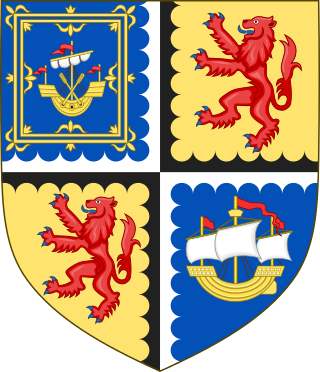
George Sinclair was a Scottish nobleman, the 5th Earl of Caithness and chief of the Clan Sinclair, a Scottish clan based in northern Scotland.

Nord-Gudbrandsdal Deanery is a deanery within the Diocese of Hamar in the Church of Norway. This deanery covers several municipalities in the northwestern part of the diocese. It includes churches in the municipalities of Dovre, Lesja, Lom, Nord-Fron, Sel, Skjåk, and Vågå. The deanery is headquartered at Sel Church in the north side of the town of Otta in Sel Municipality.



